Madrid and ToledoJanuary 18, 2009 When I visited Madrid five years ago, I really didn’t like it. This time, it was the exact opposite. MadridMap
The Madrid airport is incredibly beautiful, despite being as gigantic as the horrible airports in Rome and Beijing. All the light is bounced off faceted mirrors on the ceiling, and the metal struts are painted different colors which transition imperceptibly into one another. You start walking down a yellow hallway and then suddenly find yourself in a blue one without noticing how it happened. 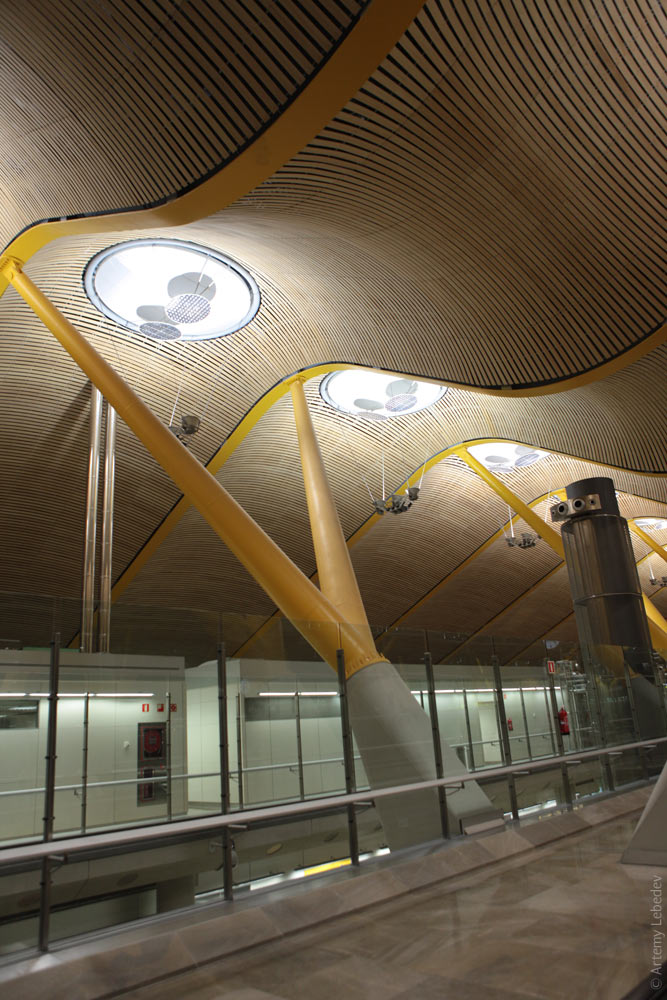 All the signs, cameras, clocks, displays and screens here are affixed to very elaborate, construction set—like totem poles. 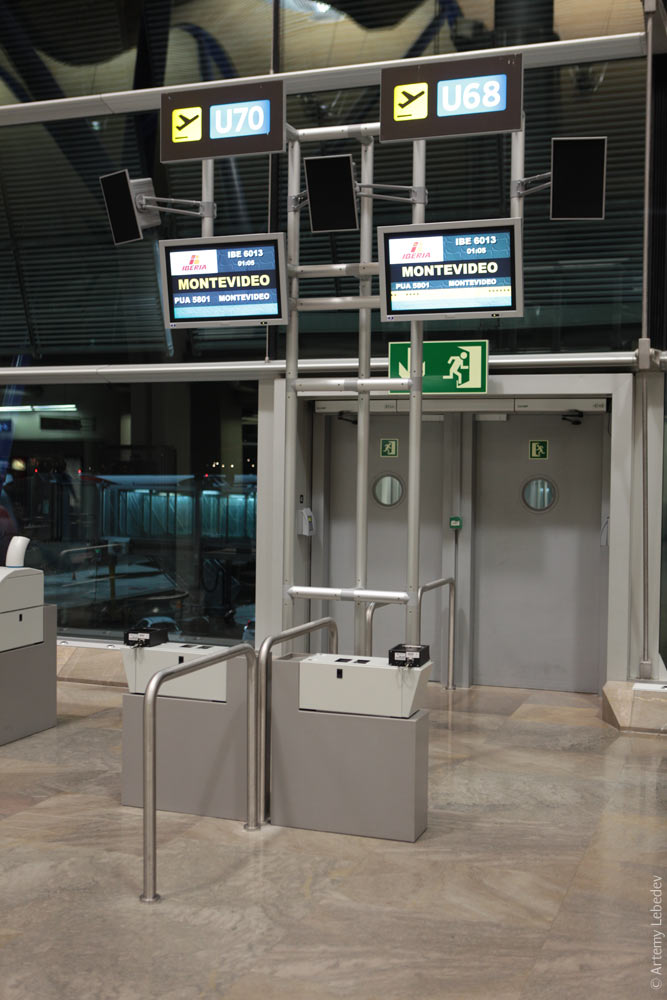 The metro had a familiar-looking bucket standing in the middle of the passageway, with subterranean water dripping into it from above. 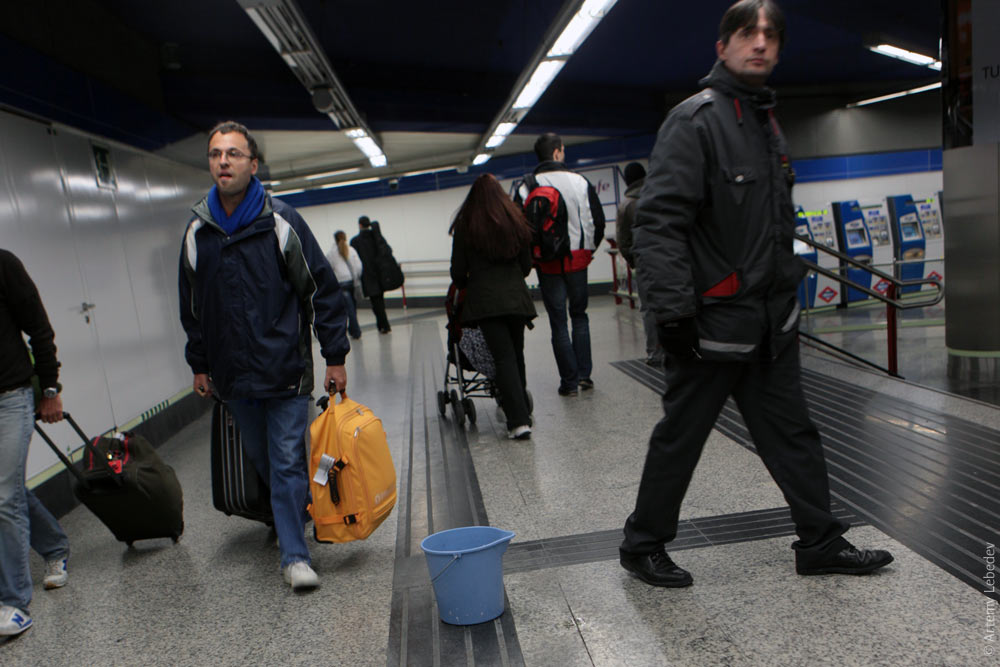 The station entrance is reminiscent of the Paris Metro, while the logo resembles that of the London Underground. 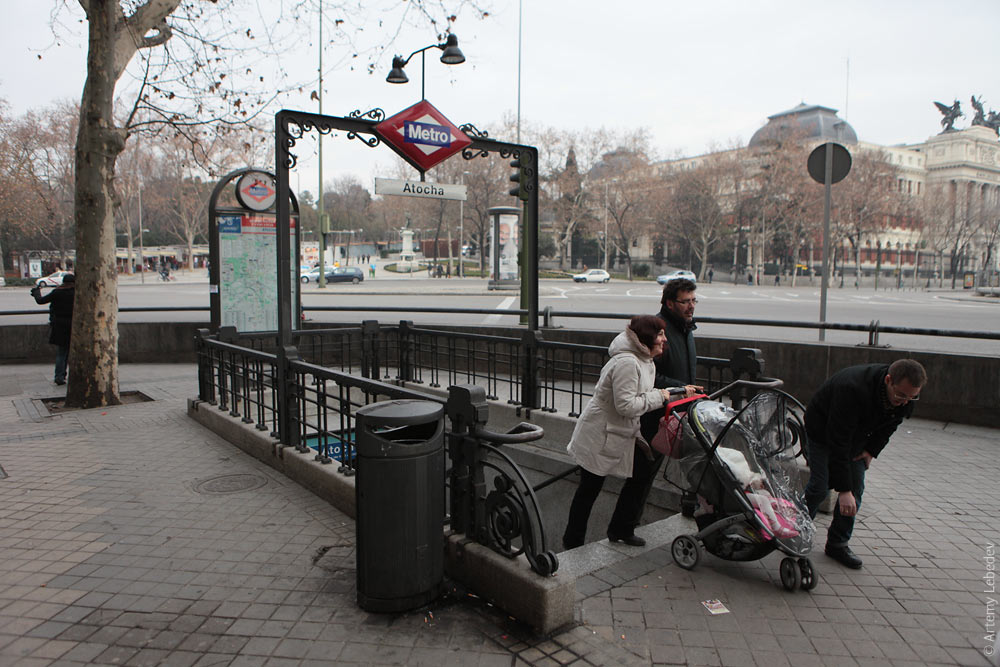 For some reason, I really enjoyed Madrid this time, even though I had precisely 45 minutes to explore the streets around the station from which my train to Toledo was due to depart. I only managed to cover a patch of about 400 meters in diameter, but it seems as though I saw all the unique details and features that the city has to see. No one has gotten around to taking the tree down after the holidays yet. 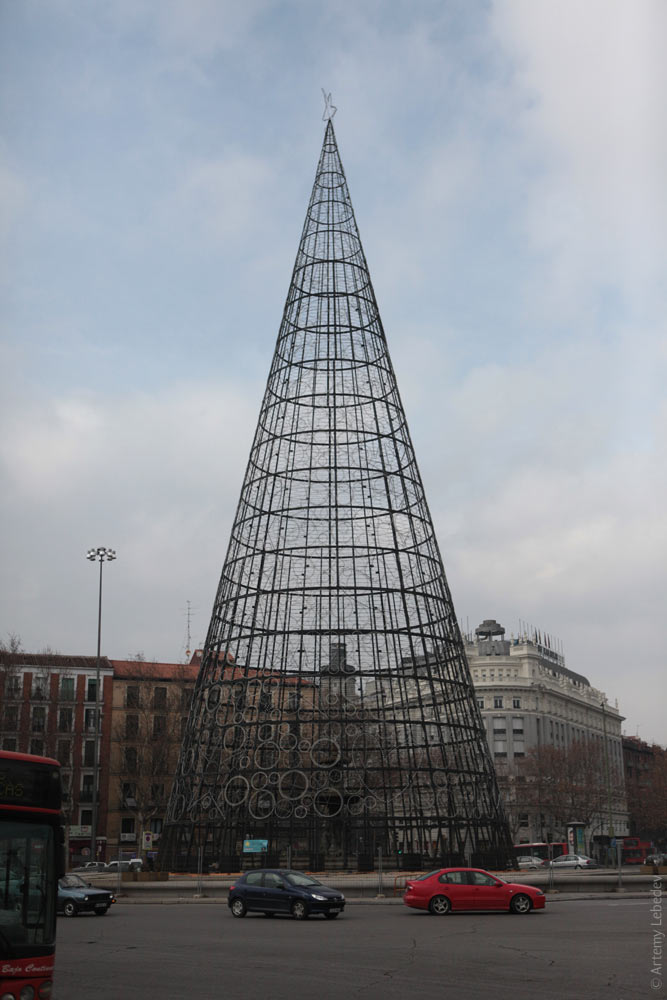 Street cleaners are dressed in their signature reflective gear; their signature cart with trash cans bears the city’s logo. 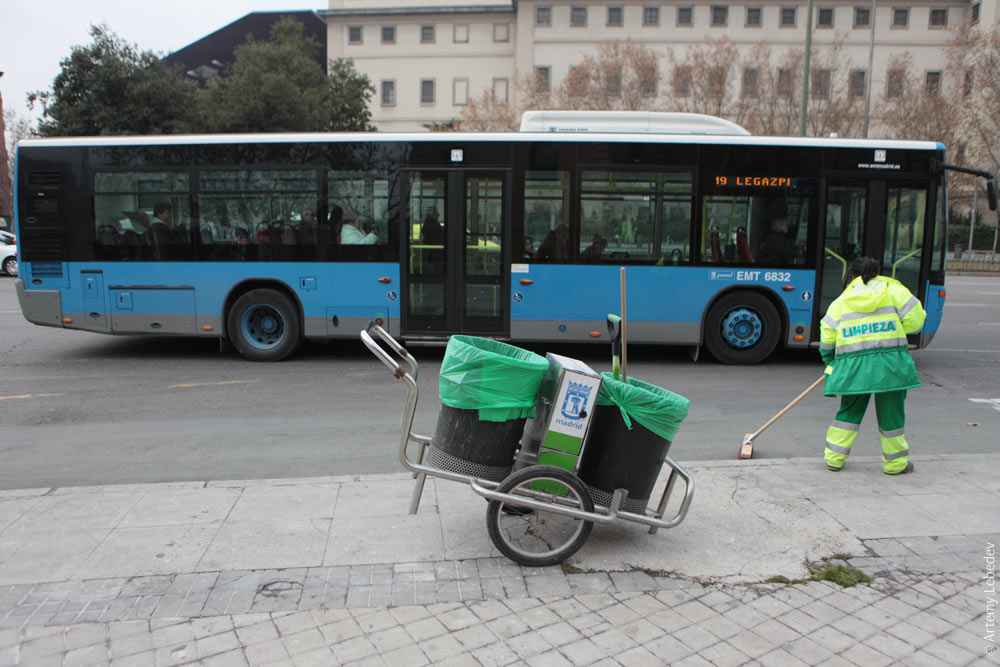 The tourist information kiosk is magnificent. 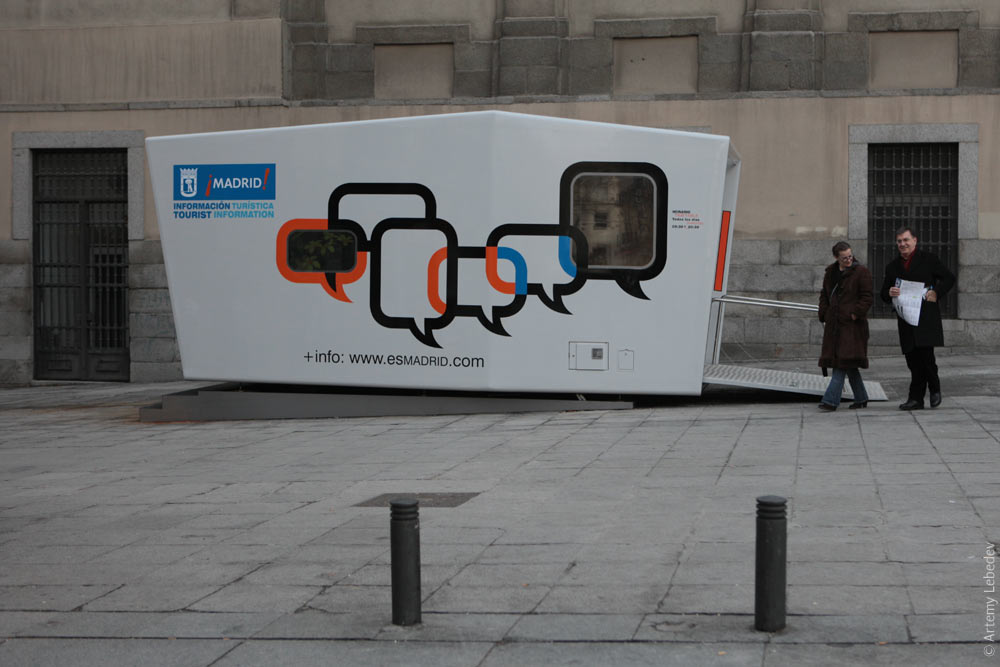 The look of the taxis is simple and elegant: white with a diagonal red stripe. Sort of like what we have on the mail trucks in Russia. 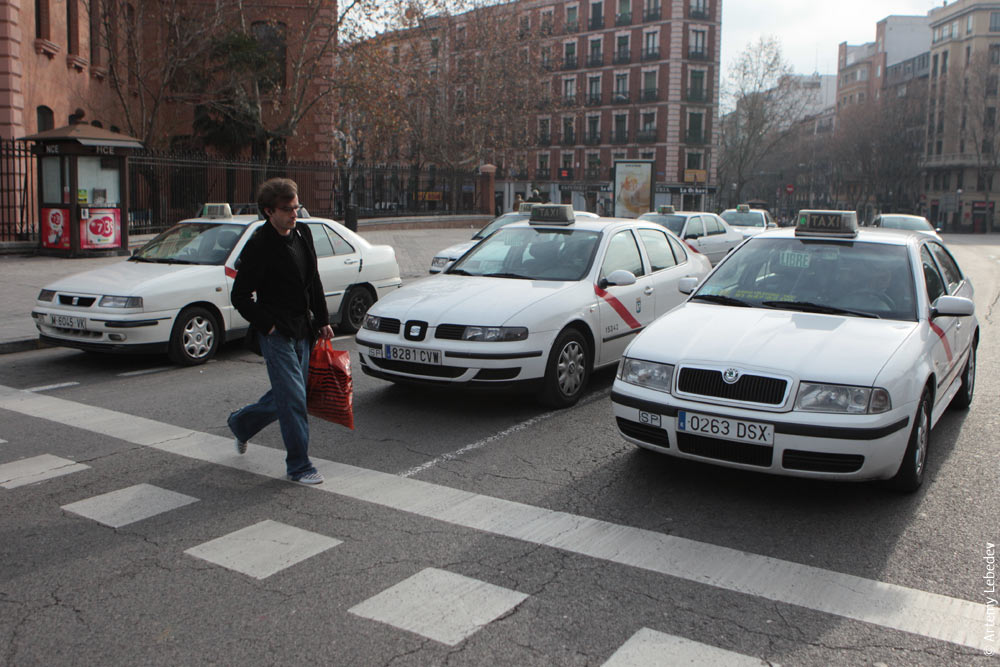 Special lanes are reserved for buses and taxis. It’s a shame that this an impossibility in Moscow. 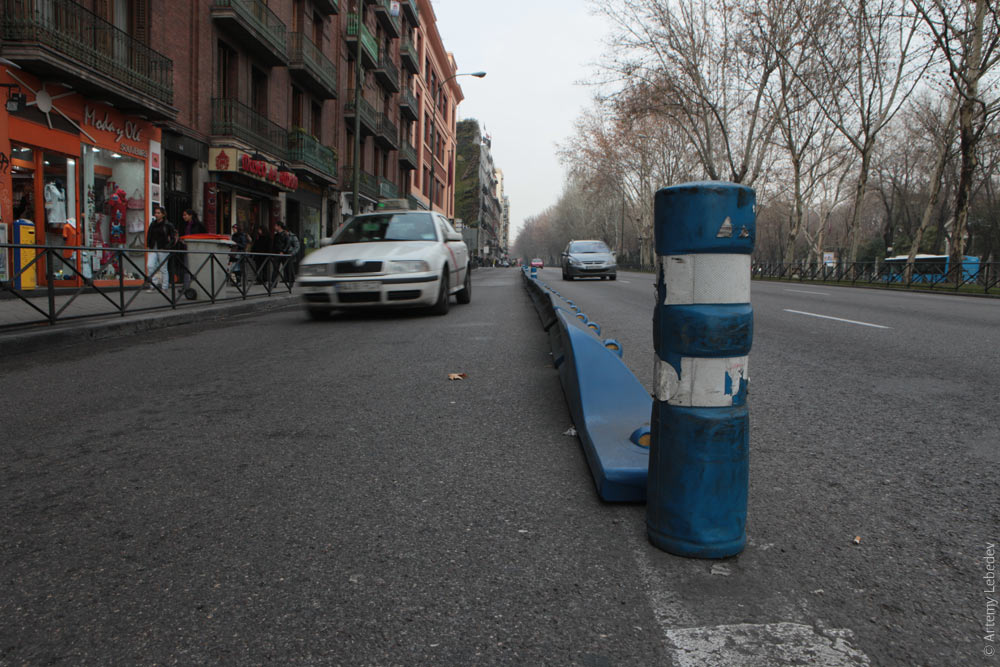 The bathroom sign is wonderful. 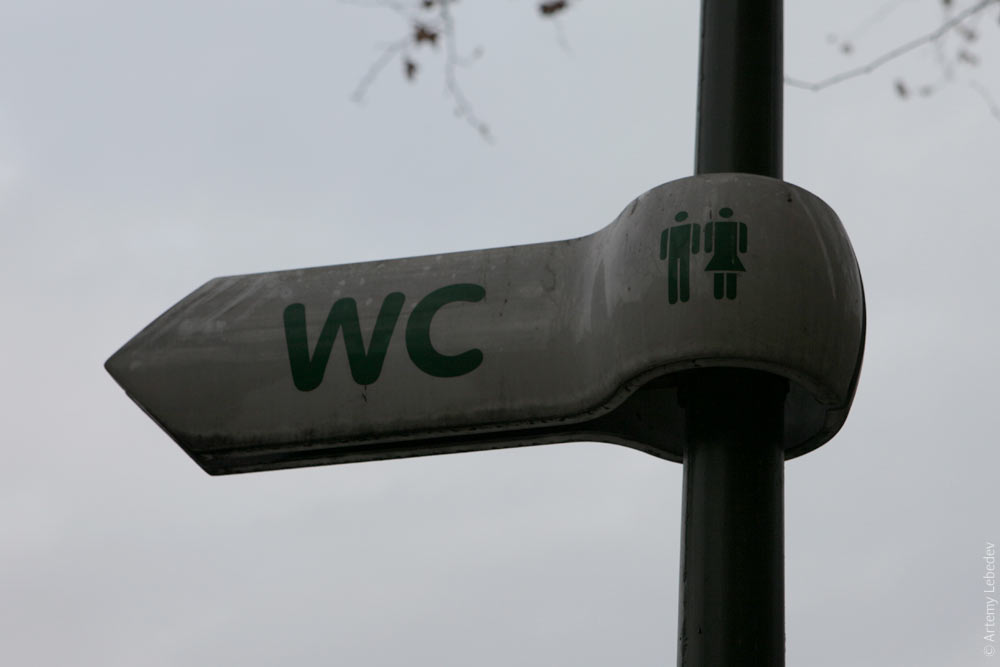 A mailbox and payphone kiosk (the same exact ones are installed in Argentina, Chile and Peru). 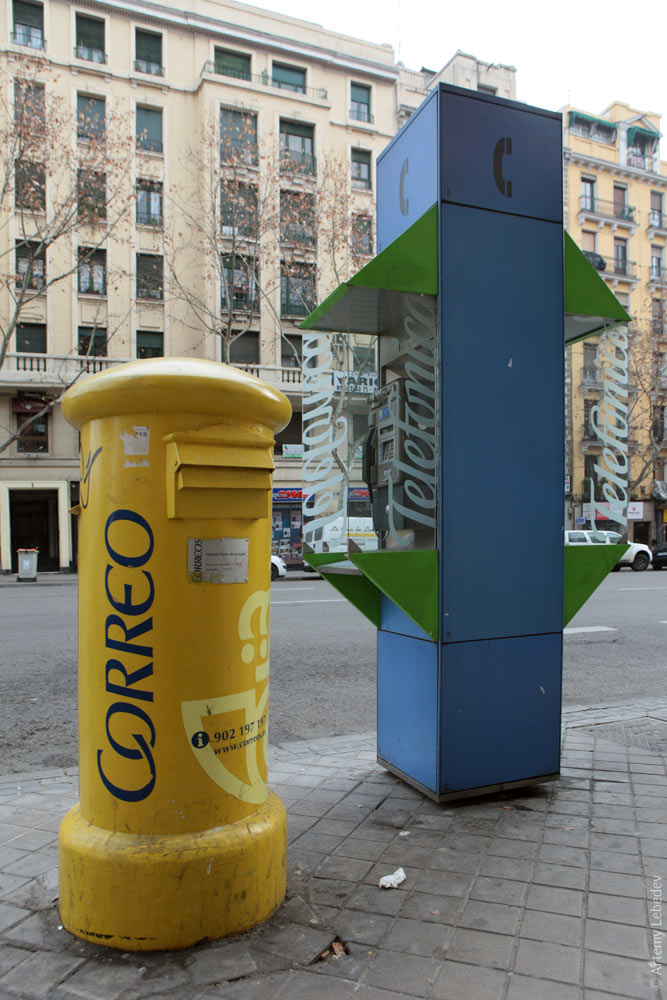 There are lottery ticket kiosks every hundred meters or so. Apparently, the Spanish play the lottery a lot. 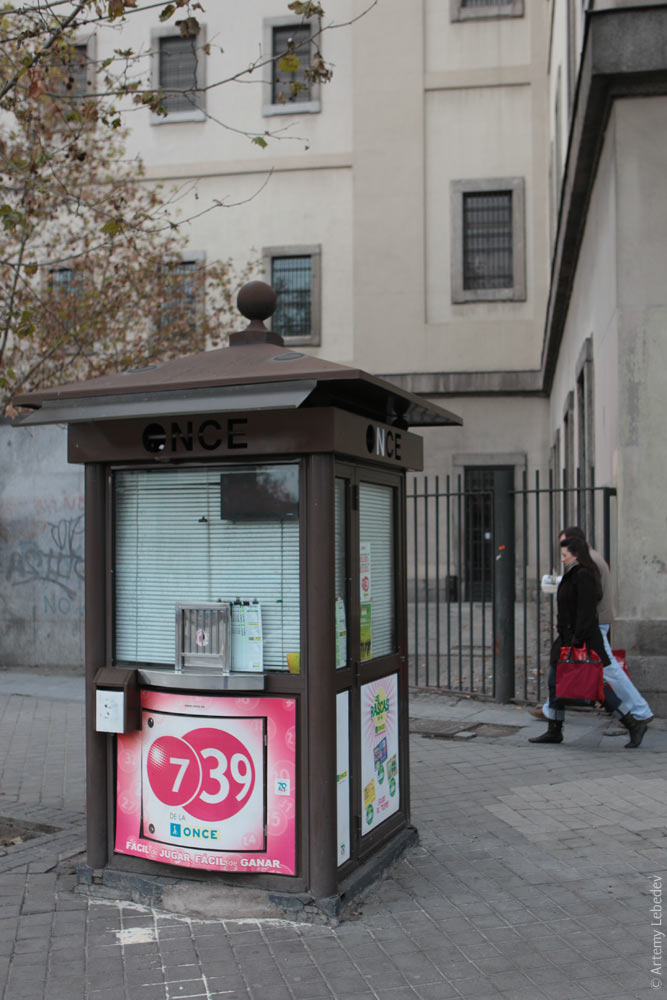 Time to go catch my train. The station has a special turtle-breeding swamp right inside. 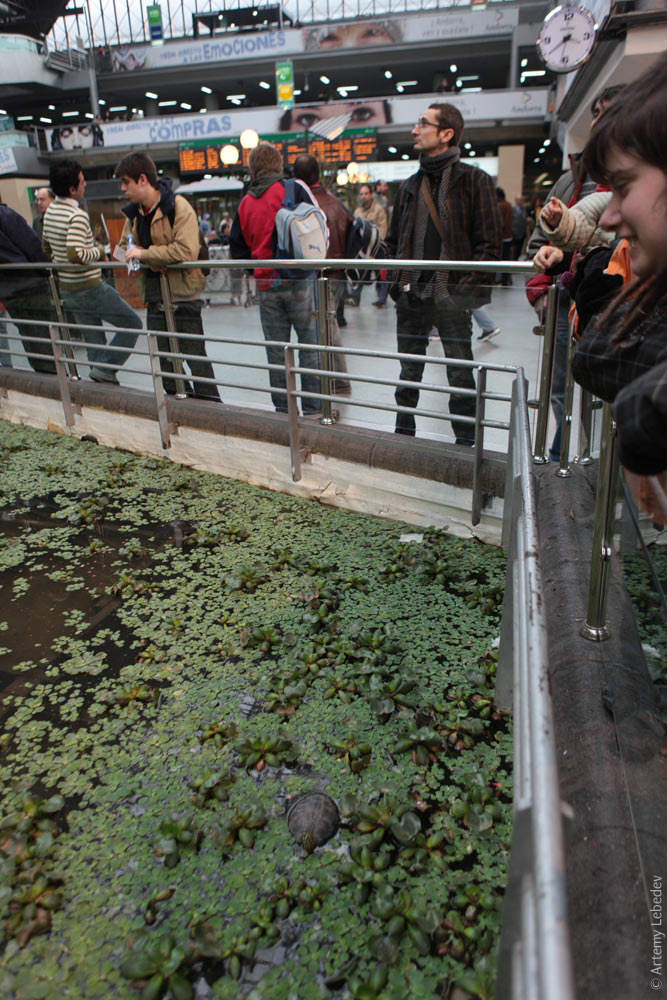
A terrorist train bombing took place here not that long ago, so now the entrance to the platform is outfitted like an airport—with metal detectors and 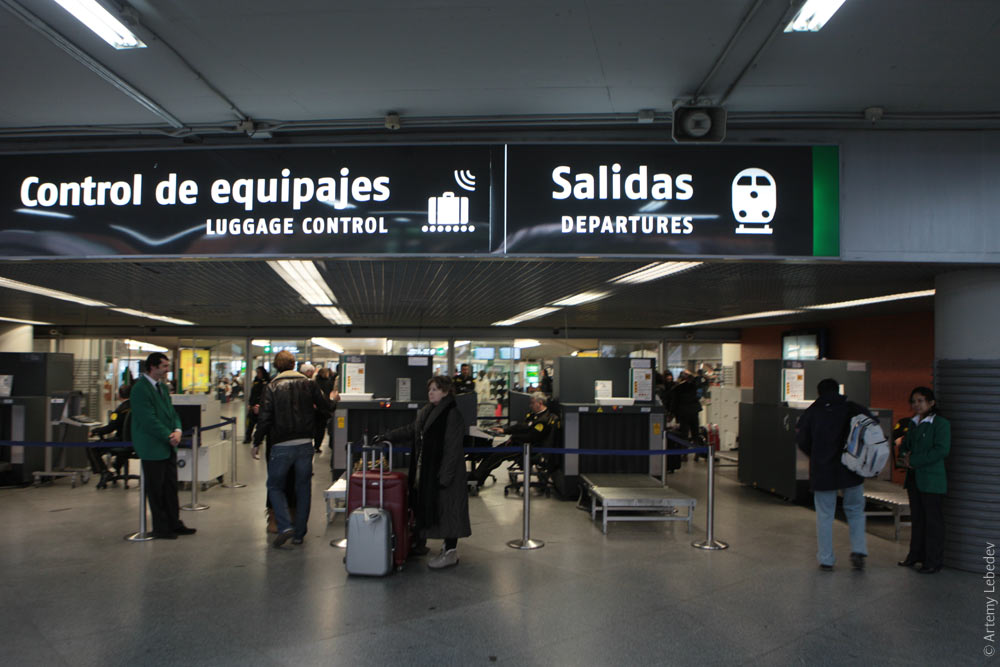 The trains reminded me of Japan. 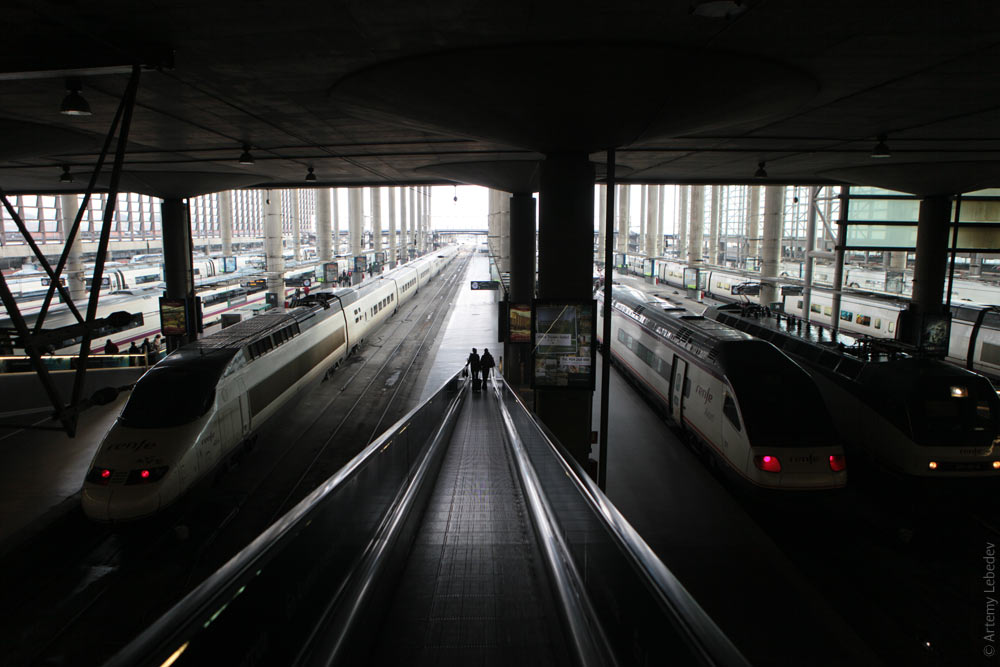 ToledoMapHalf an hour on the high-speed train—and you’re in Toledo. A historic ticket office has been preserved inside the station.  As well as an old post box (whose slot is taped over with a piece of paper that says “out of service”). 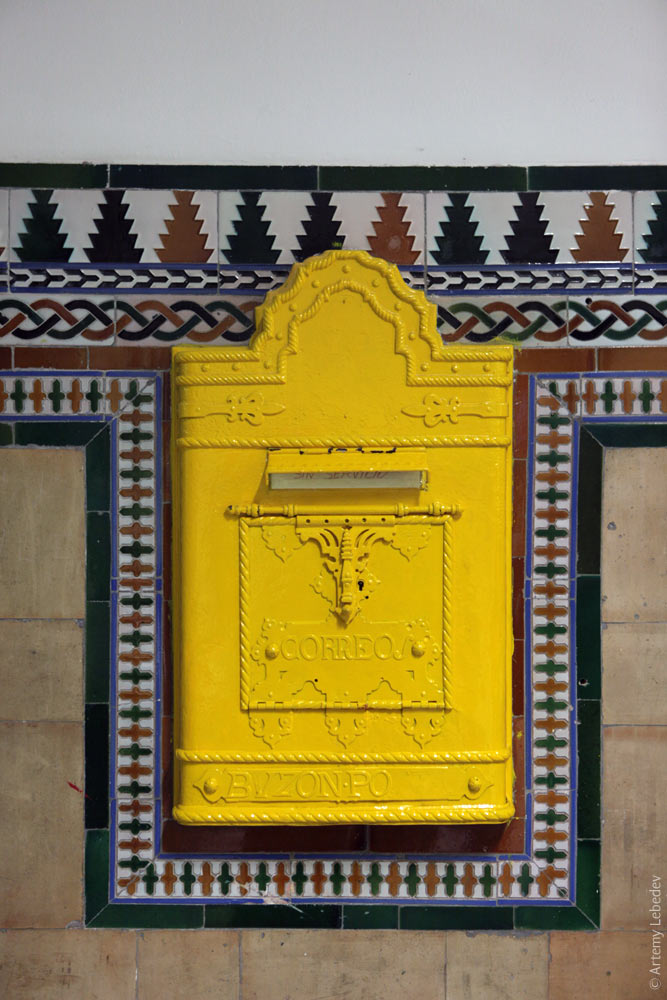 The city, very small in size, is surrounded by fields. 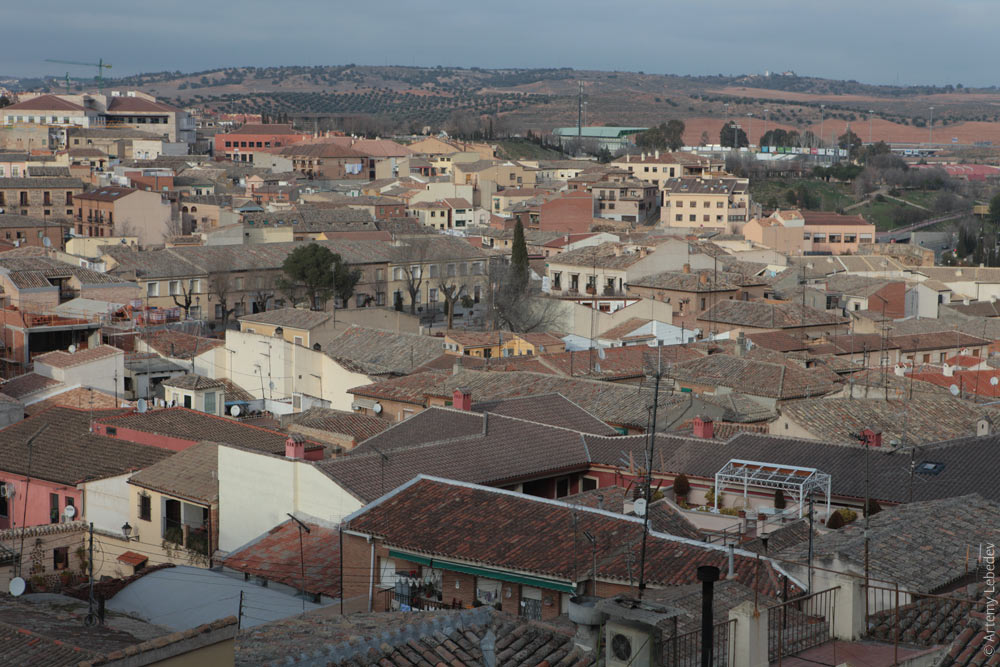 The pedestrian crossings here are interesting. Not only are they painted with blue and white stripes, they also function as speed bumps. That’ll make you think twice before cutting off an old lady trying to cross the street. 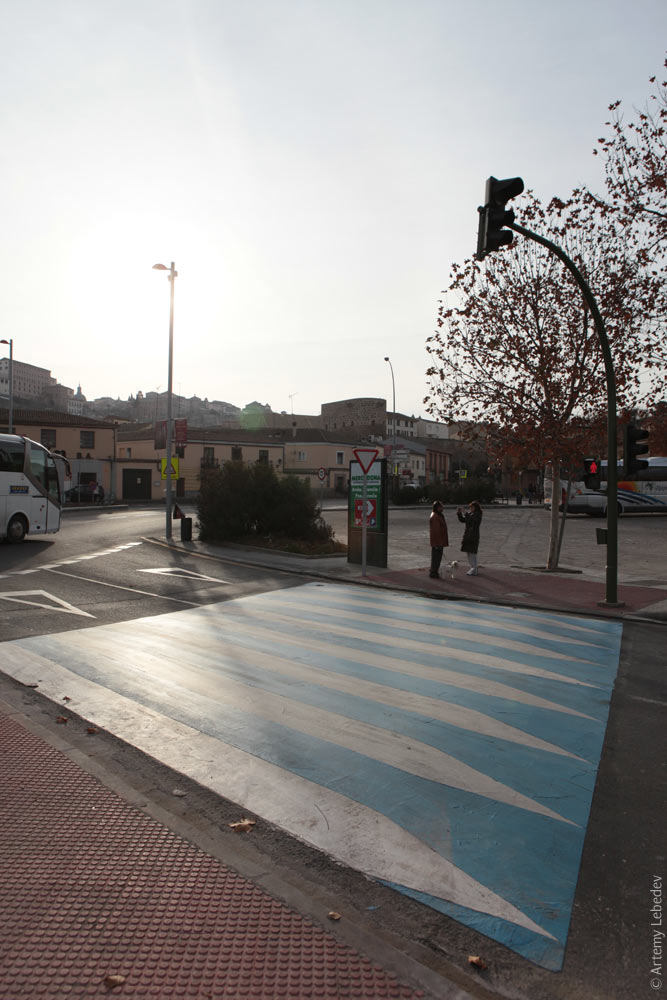 It’s probably impossible to get past the throngs of tourists here in the summer, but in the winter it’s quite tolerable. 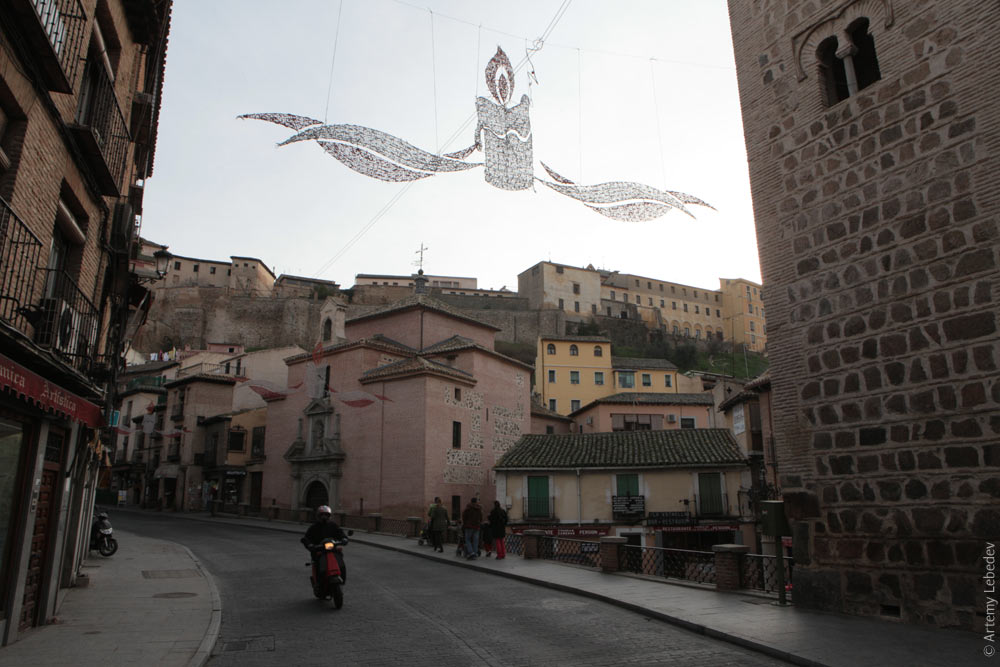 The Toledo trash can and ashtray combo.  An interesting old utility pole has survived here. 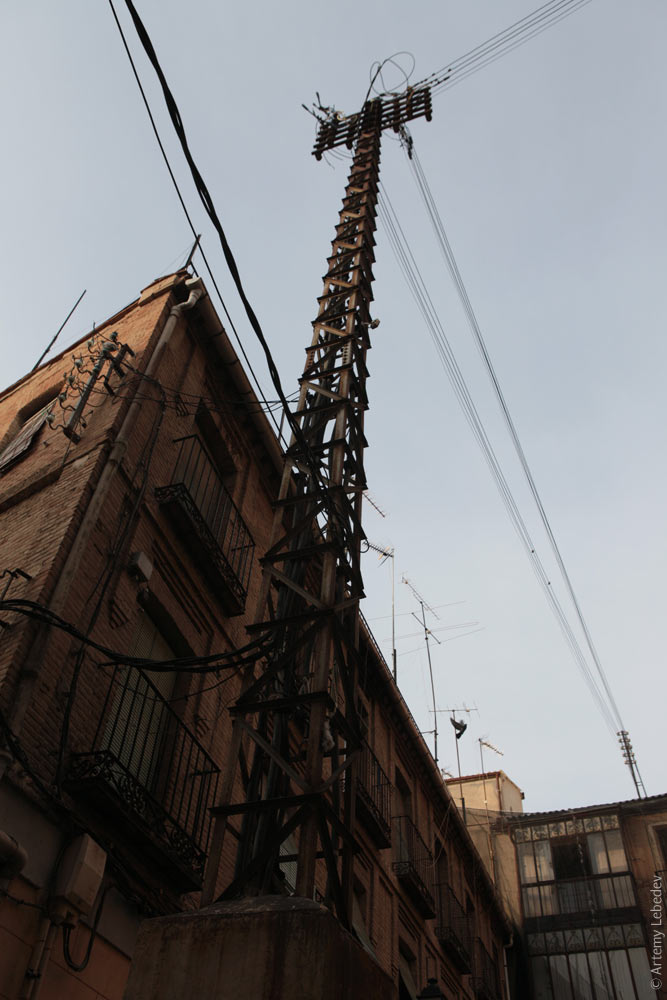 A typical balcony—it widens towards the top. This makes the balcony more convenient to lean out from, as well as gives you a place to put your cup. 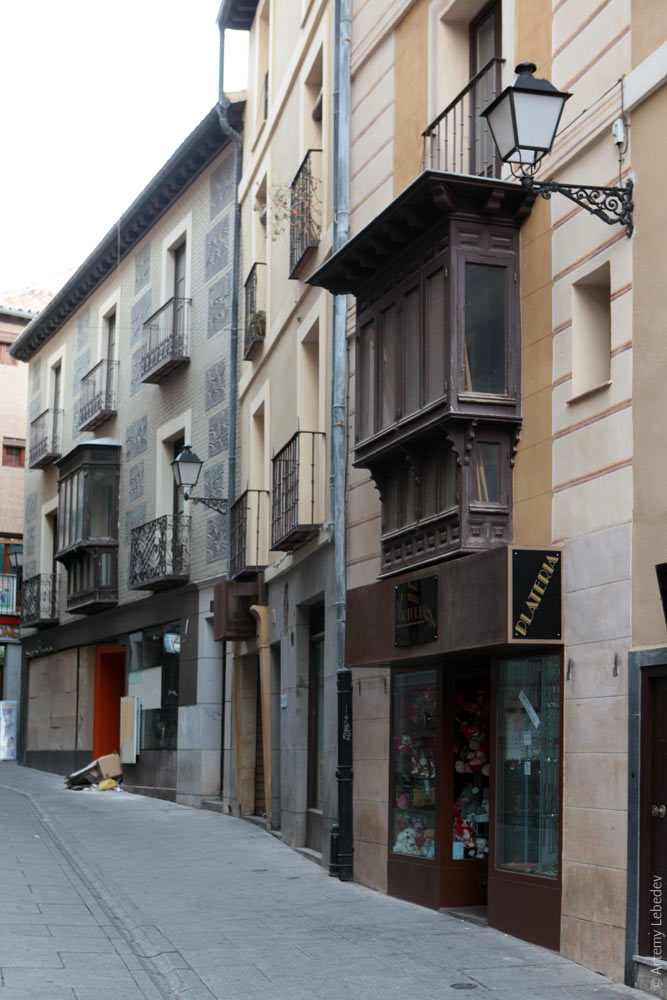 The streets of old Toledo are narrow and cramped, but not particularly striking in any way. 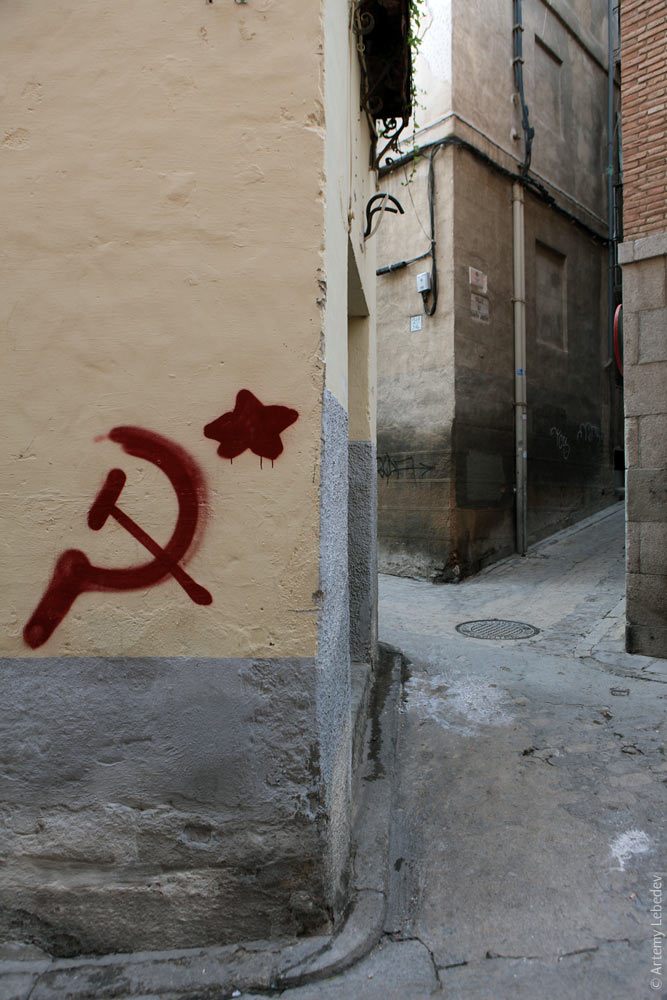 What is striking, however, is the traffic signs. They’re embossed here, which is insanely beautiful. 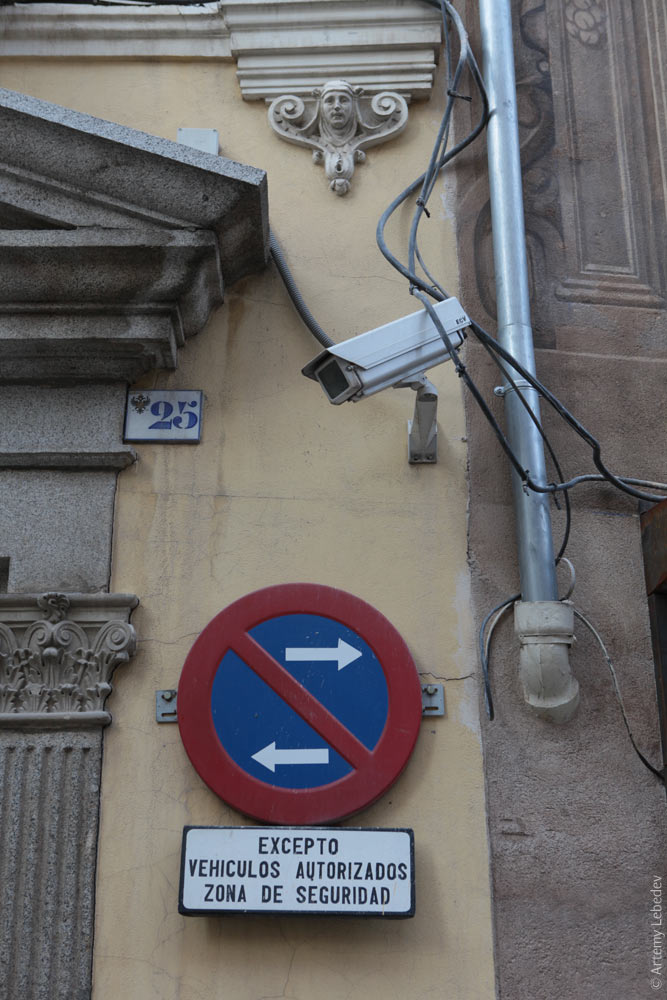 Here’s a side-by-side comparison. The sign on the left only has the circle embossed. This is better than no embossing at all, but it doesn’t even compare to the sign on the right, which is simply magnificent.  Attention, children. So beautiful you can hardly take your eyes off it. 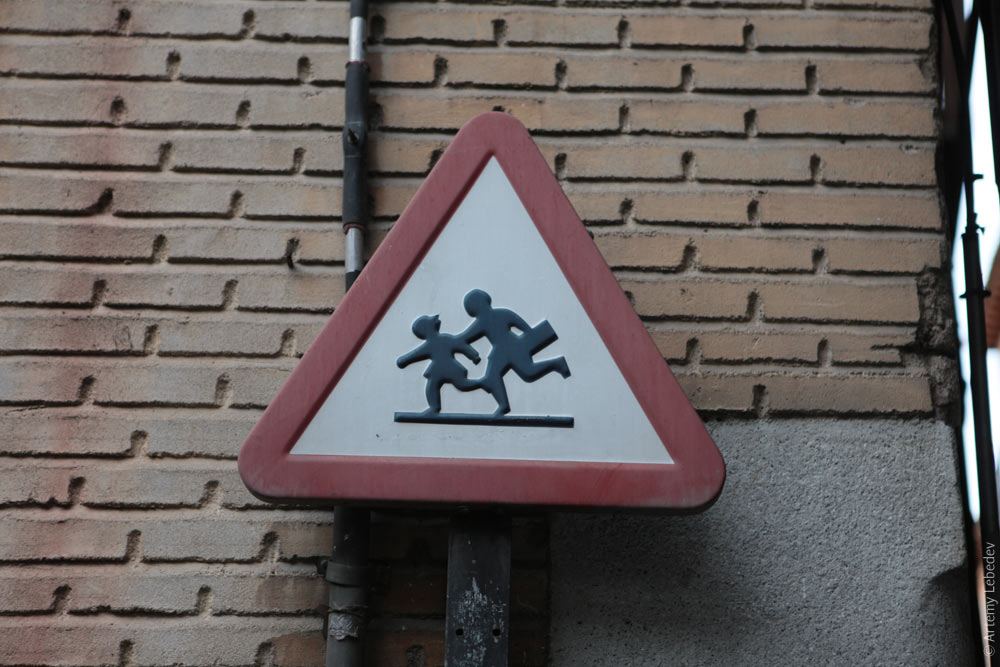 Both the pedestrian and the number 40 are embossed. Gorgeous. 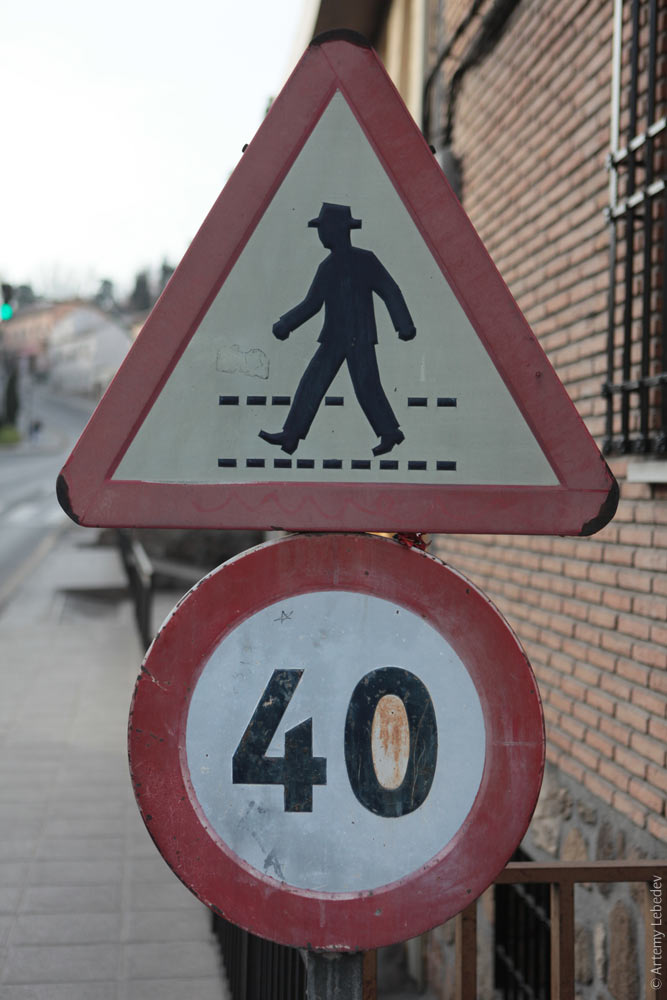 An arrow, oh, what an arrow. Simply amazing. Now it’s clear where the inspiration for a similar arrow in Casablanca came from. 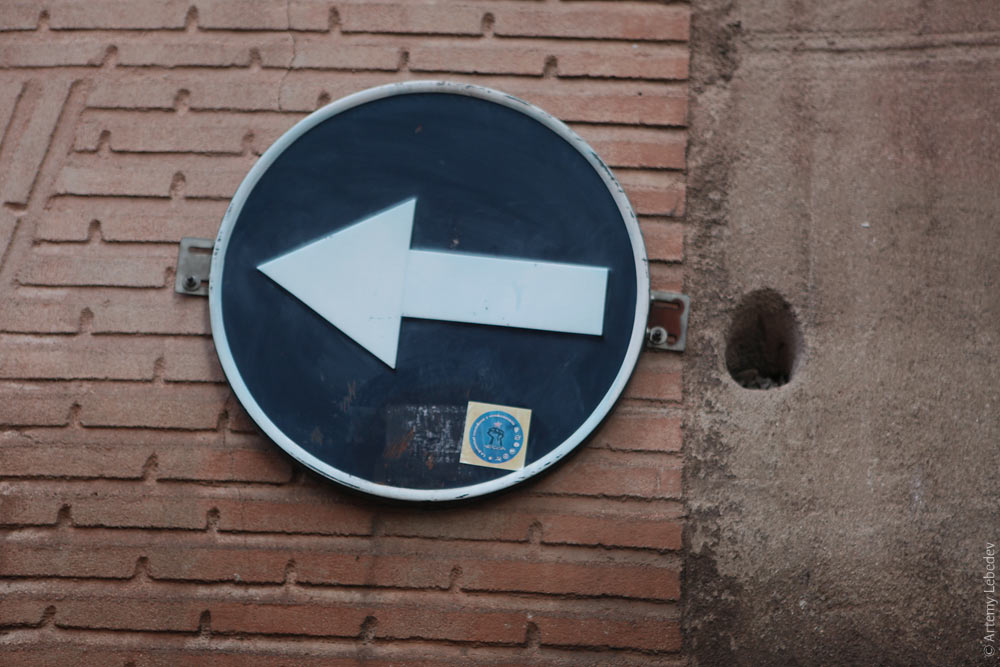 A gas station sign—this alone made coming here worth it. Incredible. 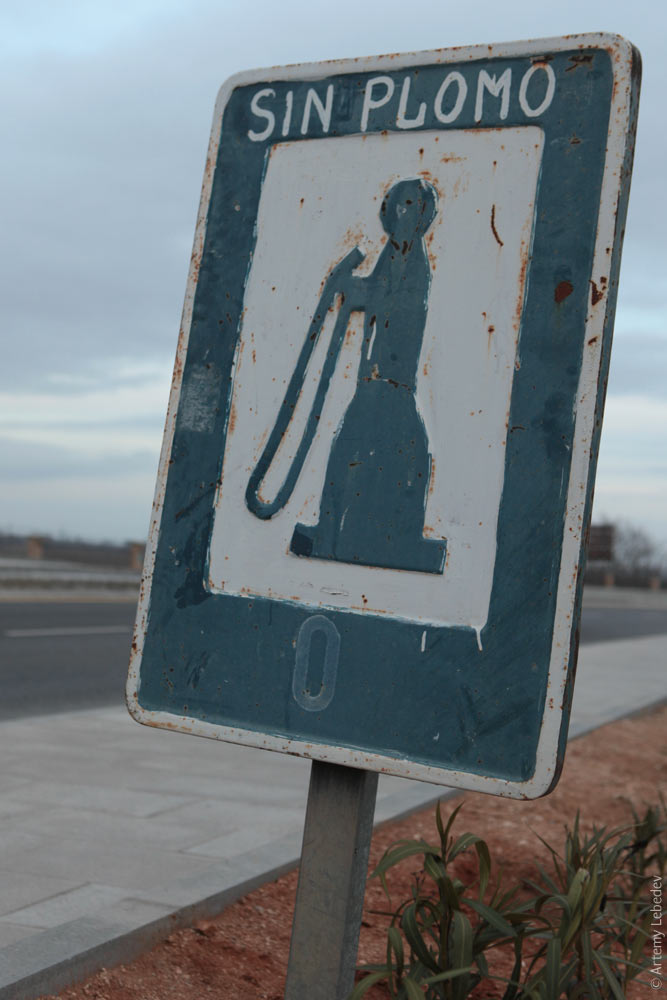 As for old buildings and such—who hasn’t seen that stuff before, for heaven’s sake? 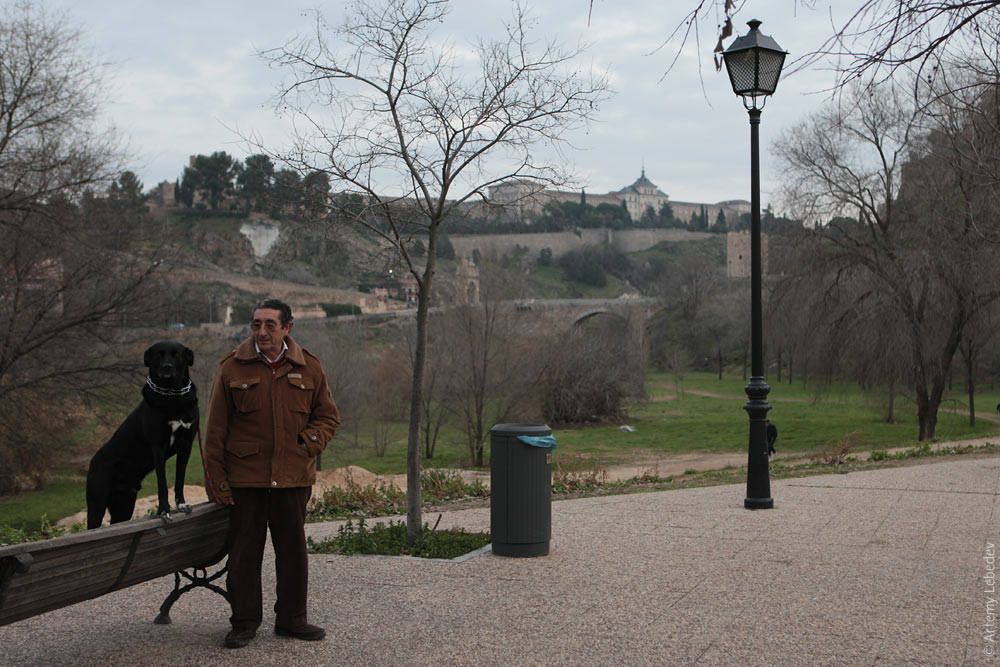 The safety braking device has an interesting design. Looks like it should be able to absorb impact very effectively. 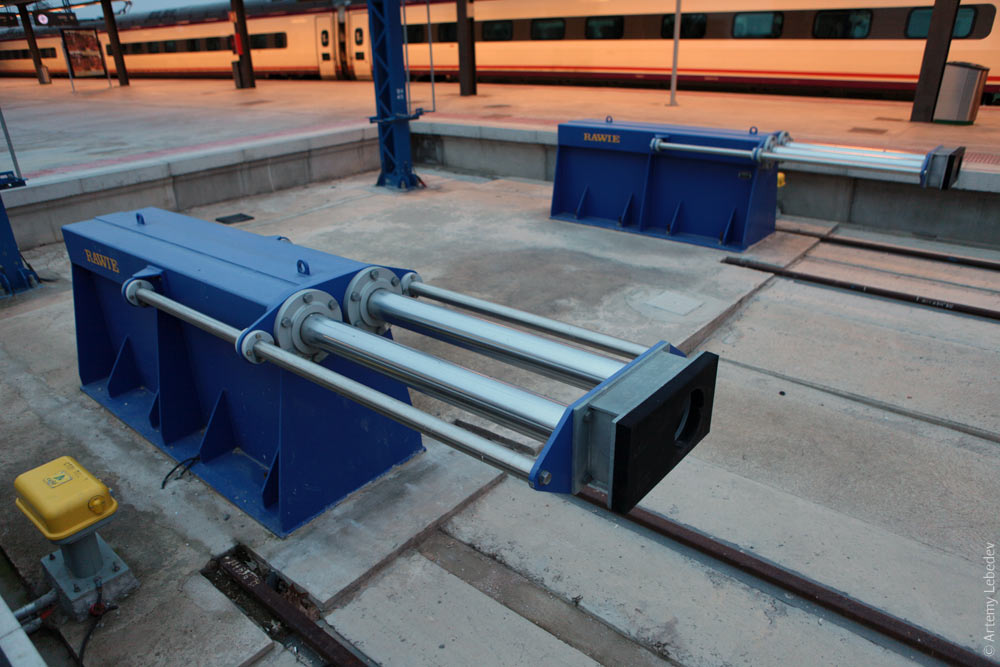 MadridHalf an hour on the high-speed train—and you’re back in Madrid.  Earlier in the day, I made a reservation for a table at Sobrino de Botín, the oldest existing restaurant in the world. It still has an 18th-century oven which is used to cook the restaurant’s signature roast suckling pig. The pig was practically free by Moscow standards (18 euros), the wine (compared to wine prices at Moscow restaurants, it cost the same as a counterfeit Moldovan table wine) was superb, and the kitchen didn’t mind if I snapped some photos. What you see on the shelves is the abovementioned suckling pigs. 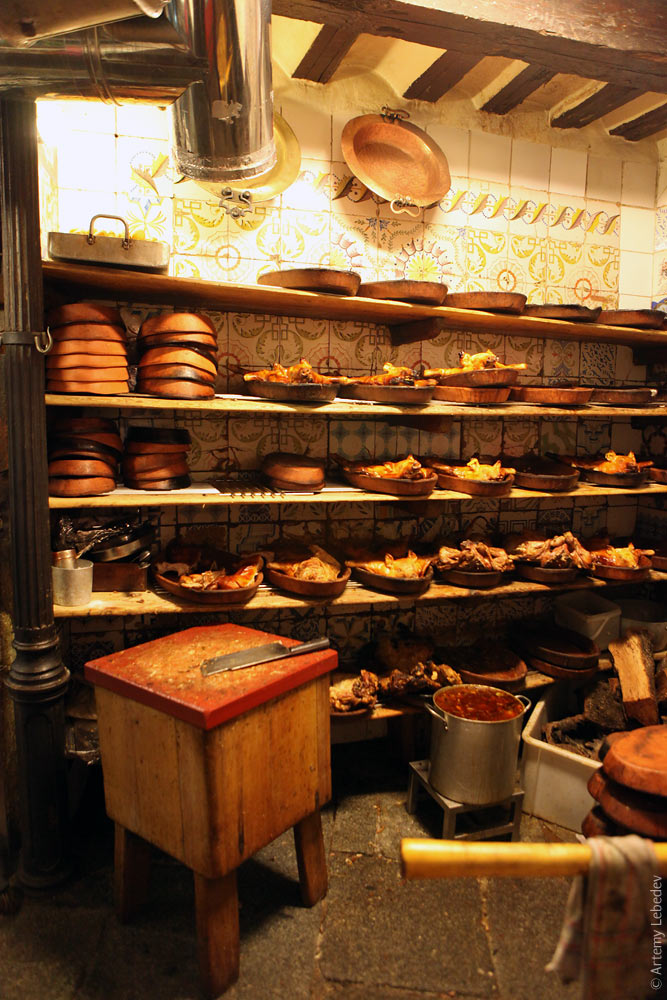 Everyone on the “residential area” sign has scattered in different directions, and the time has come for me to board the metro, which will take me directly to the airport. 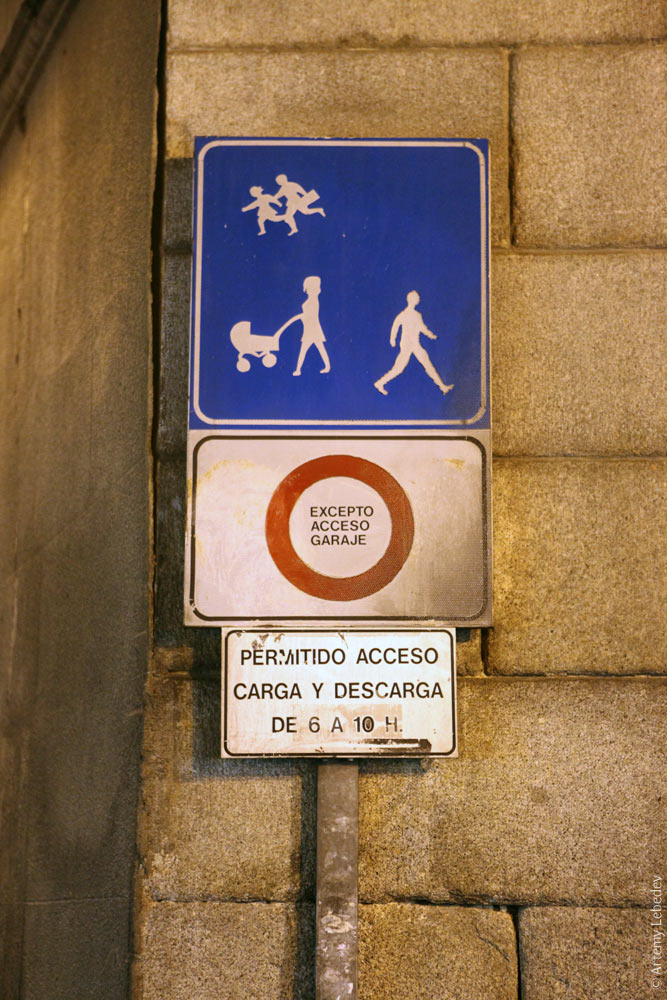 Thus passed January 18, 2009. |